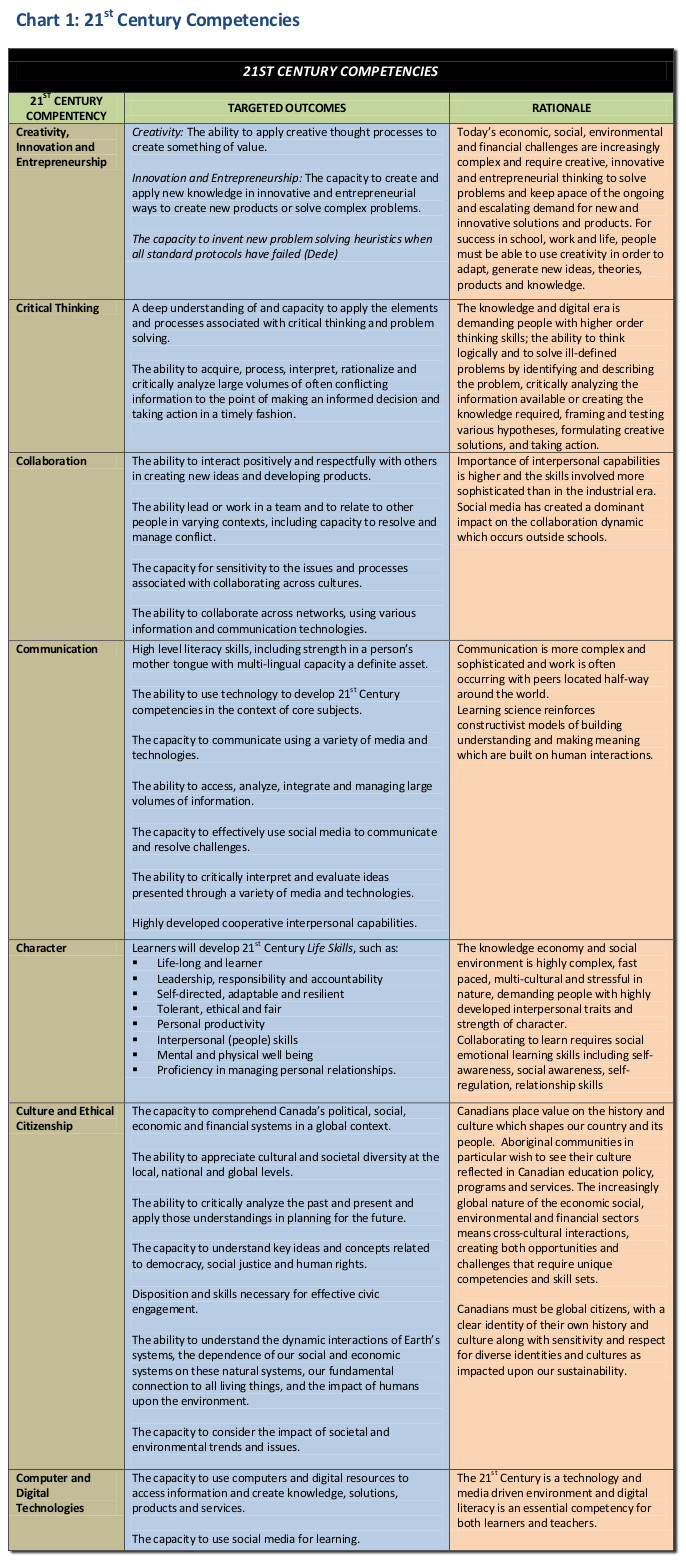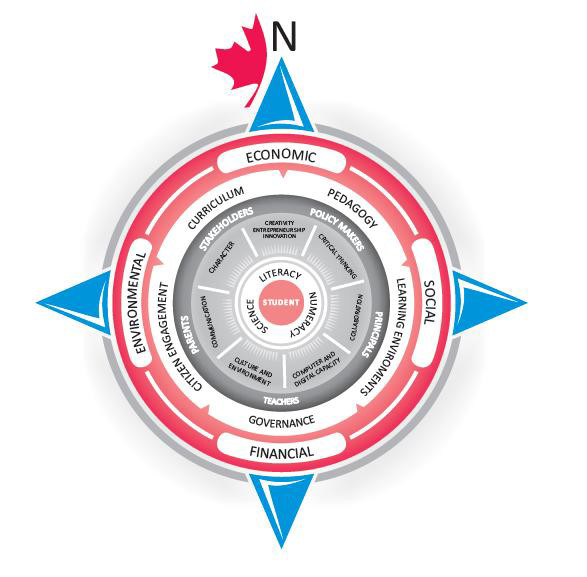APPENDIX E
C21 is Canadians for 21st Century Learning and Innovation, their goal is
to “acelerate the pace of change.” They are a partnership of stakeholders in education from a wide spectrum of
public and private efforts and interests. Technology is well represented (e.g., Dell, Microsoft, IBM), as are testing/textbook firms (Pearson, Nelson)
and other education resource producers. The list has many partners in common with the USA's similar initiative,
Partnership for 21st Century Skills, but has a more Canadian focus and representation
(e.g., Scholastic Canada, SMART Technologies).
See www.c21canada.org
C21 Canada (2012), A 21st Century Vision Of Public Education for Canada
GUIDING PRINCIPLES
Canada has maintained a high standard of public education that has been respected and sought after worldwide. More recently, the pace of change in the world is now shifting at unprecedented levels, and Canadians appreciate that our youth must be positioned for success in their future and not our past. In this context, Shifting Minds is offered as a go-forward 21st Century learning framework for Canada’s public education systems, and is founded on the following seven (7) Guiding Principles:
Principle 1
All Canadians have a universal right to reach their full learning potential and to have a voice in their learning needs.
Principle 2
The primary focus of Canadian education is to position learners for fulfillment and success in the modern world.
Principle 3
Literacy, numeracy, science, life skills and 21st Century competencies must now be the foundational learning outcomes of Canada’s public education systems.
Principle 4
Instructional, assessment practices and learning environments must be modernized to personalize the learning experience and better engage Canadian students.
Principle 5
Personalized access to teachers highly skilled in 21st Century learning skills and research-based learning environments is a universal right of every Canadian learner.
Principle 6
Public education is a community and societal enterprise where all Canadians share both the responsibility for and benefits of providing high quality and modern learning opportunities.
Principle 7
Canadians must engage in and support their education leaders in offering today’s students - creative, innovative, authentic, dynamic and modern learning experiences and environments.
C21 Canada (2012), 21st Century Competencies

Source:C21 Canada (2012), A
21st Century Vision Of Public Education for Canada, www.c21canada.org, accessed 2012-06-21.
The C21 Vision Graphic
The graphic below illustrates the various elements of the proposed 21st Century learning framework and how they inter-relate. It is important to note that the student is placed at the centre. This placement emphasizes the focus of 21st Century models of education on meeting the learning needs of each individual student.

Source:C21 Canada (2012), A 21st Century Vision Of Public Education for Canada, www.c21canada.org, accessed 2012-06-21.